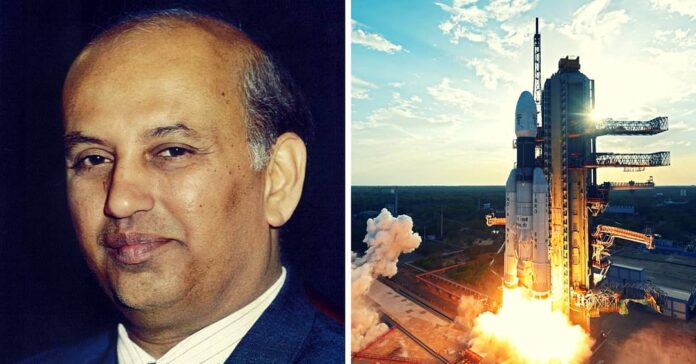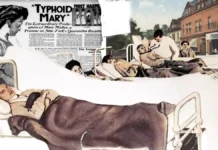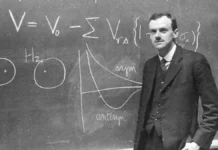Space Scientist Udupi Ramachandra Rao is an internationally renowned space scientist who made significant contributions to the development of space technology in India and its extensive application to communications and remote sensing of natural resources. He was the former Chairman of the Governing Council of the Physical Research Laboratory at Ahmedabad and the Indian Institute of Space Science and Technology Chancellor at Thiruvananthapuram. He also worked as a Faculty Member at MIT and Assistant Professor at the University of Texas at Dallas. In addition, he conducted investigations as a prime experimenter on several Pioneer and Explorer spacecraft.
He was the former Chairman of the Space Commission and Secretary Department of Space (Chairman of the Indian Space Research Organization – ISRO ). He identified the imperative need to use space technology for rapid development and undertook the responsibility for the establishment of satellite technology in India. Under his guidance, India’s first satellite ‘Aryabhata’ and over 18 satellites were designed and launched to provide communication, remote sensing, and meteorological services.
Prof. Rao accelerated the development of rocket technology, resulting in the successful launch of many rockets. He’s the one who initiated the development of the geostationary launch vehicle GSLV and the development of Cryogenic Technology. Prof Rao has published over 350 scientific and technical papers covering cosmic rays, interplanetary physics, high energy astronomy, space applications, and satellite and rocket technology and authored many books. He was also the recipient of a D.Sc. (Hon. Causa) Degree from over 25 Universities, including the University of Bologna, the oldest University in Europe.
Prof Rao was awarded ‘Padma Bhushan’ by the Government of India, the third-highest Civilian Award, and ‘Padma Vibhushan,’ the second-highest Civilian Award. Prof. U.R. Rao became the first Indian Space Scientist to be inducted into the highly Prestigious “Satellite Hall of Fame” in Washington DC. Prof. Rao became the first Indian Space Scientist inducted into the highly Prestigious “IAF Hall of Fame” in Guadalajara, Mexico.
One of the great scientists of India, Prof. Udupi Ramachandra Rao Biography, is better known as India’s satellite man Prof. U. R. Rao.
Contents
Born
U. R. Rao was born on March 10, 1932, in Adamaru village in the south Canara district in Karnataka state. His parents were Lakshminarayana Acharya and Krishnaveni Amma. His full name was Udupai Ramchandra Rao.
Early Life and Education
U. R. Rao completed his primary education at Adamaru and secondary education at Christian High School, Udupi(Odipu), Karnataka. He studied in Mysore and then graduated from Madras University in 1951 with a Bachelor of Science Degree and completed his Master’s Degree from Banaras Hindu University in 1953. In the same year, he went to Ahmadabad and joined the Physical Research Laboratory (PRL) for his Ph.D. and began research on cosmic rays under the guidance of Dr. Vikram Sarabhai; after studying further, he acquired a Ph.D. at the Physical Research Laboratory, Gujarat University, Ahmedabad in 1960. He loved reading during his school and college days and was among the top rankers in class. Thus, in 1961, he received a post-doctoral fellowship from the Massachusetts Institute of Technology(MIT), Boston, USA, for further studies.
He left India and joined MIT to conduct advanced Research on Spacecraft and further research on cosmic rays and solar winds. After two years of study at MIT, he worked as an assistant professor at the South West Center for Advanced Studies at Texas University. Also, he carried out investigations as a prime experimenter on several Pioneer and Explorer spacecraft from 1963 to 1966.
After working as a faculty member at MIT and Assistant Professor at the University of Texas at Dallas, he returned to India in 1966. He continued with his research studies on X-rays and gamma-rays in cosmic rays. Prof Rao’s experiments involved the use of balloons, rockets, and satellites, which were used as payloads. Prof. Rao also served as an associate professor at the Physical Research Laboratory from 1968 to 1970. Then, in 1970, he was promoted to professor. He worked on that post for two years.
During his research at PRL, he and his colleagues contributed significantly to understanding the interplanetary medium. His research on solar winds has increased our understanding of the subject. The data interpretation of American Satellites Pioneer I and Pioneer II became accessible due to his studies. His knowledge of the solar winds by unraveling the American satellite Mariner II observations provided new insight into the world of science. He was the first to establish the relationship between geomagnetic storms and solar winds with the help of comments made on Earth. For his highly accurate analysis of the Pioneer 6,7,8 and 9 observations, he was awarded the ‘Group Achievement Award by the National Aeronautics & Space Administration (NASA) in 1973.
In 1972, he was appointed director of the ISRO Satellite Centre in Bangalore. He successfully discharged his duties here till 1984.
Later Life and Career
Prof. Rao’s Career started as a Cosmic Ray Scientist at the Physical Research Laboratory, Ahmedabad, under the guidance of Dr. Vikram Sarabhai; he continued this work at MIT. He was the first to establish the continuous nature of the solar wind and its effect on geomagnetism using Mariner 2 observations in association with the Jet Propulsion Laboratory group in the USA. Prof. Rao’s experiments on several Pioneer and Explorer spacecraft directed to a complete understanding of the solar cosmic-ray phenomena and the electromagnetic state of interplanetary space.
As a director of the ISRO Satellite Centre in Bangalore, he started the development of the new institute. After Dr. Sarabhai’s death, he entirely concentrated on enriching the space department and reinforcing satellite technology in 1972. He knew the immediate need and use of space technology for rapid development, so he was responsible for establishing Satellite Technology in India. Under his guidance, India’s first satellite ‘Aryabhata’ and over 18 satellites, including Bhaskara, APPLE, Rohini, INSAT-1, and INSAT-2 series of multipurpose satellites, and the IRS-1A and IRS-1B remote sensing satellites were designed, fabricated, and launched for providing communication, remote sensing, and meteorological services.
Aryabhata satellite was launched in 1975, and this was successfully launched from the Russian Cosmodrome and was well in control after that. Then the design, development, and successful orbit of Bhaskar I and II were carried out in 1979 and 1981. Under Rao’s leadership, the first experimental geostationary satellite Apple was put into orbit in June 1981. This gave a boost to the development of this new technology in India. Finally, the Indian Remote Sensing (IRS) and the INSAT satellites were designed, developed, and successfully sent into orbit for broadcasting and meteorological purposes for broadcasting and meteorological purposes for broadcasting and meteorological purposes for broadcasting and meteorological purposes for broadcasting and meteorological purposes for broadcasting and meteorological purposes for broadcasting and meteorological purposes. The success achieved in putting them in appropriate orbits has increased the faith in Indian scientists and technicians. All this happened under Rao’s leadership.
October 2, 1984, was when Prof. Rao was appointed Chairman of ISRO and secretary of Space Commissions, Government of India. After taking charge as Chairman of the Space Commission and Secretary of the Department of Space in 1985, he accelerated the development of Rocket Technology. He brought forward the space program by guiding the scientists and engineers, which helped in the successful launch of the ASLV rocket in 1992. He also developed the operational PSLV launch vehicle, successfully launching an 850 kg satellite into a polar orbit in 1995. Furthermore, he initiated the development of the geostationary launch vehicle GSLV and the development of Cryogenic Technology in 1991. In addition, he was responsible for the successful launch of INSAT satellites during his stint at ISRO.
Satellite launch vehicles like the ASLV, which could launch a satellite with a payload of 150 Kg in lower orbit, and PSLV, which could launch a satellite with a load of 1000 kg in polar orbit, were prepared. Besides, cryogenic engines are acquired to produce launch vehicles for GSLV geostationary satellites. These satellite launch vehicles can put satellites with a 2.5-ton payload into orbit. Under his leadership, the country’s space programs took a giant leap and made various achievements recognized worldwide. Prof. Rao performed his duties successfully till 1994.
During the 1980s and 1990s, this rapid development and the launch of INSAT satellites gave momentum to communications in India. The successful launch of INSAT provided telecommunication links to remote corners of India. During these decades, fixed telephones (called landlines) expanded throughout the country due to the availability of satellite links at different places on the ground. People could talk easily from anywhere using STD (Subscriber Trunk Dialing) instead of waiting hours to get the connection. This development played a crucial role in India’s future as an Information Technology hub. He was the first Chairman of Antrix Corporation.
Prof. U. R. Rao’s Legacy and Honors
In 1975, the Russian Science Academy, praising his efforts for the successful launch of the Aryabhatt satellite, honored him with the Russian Medal of Honor. The same year, he was awarded the ‘Dr. Vikram Sarabhai Research Award instituted by the Hariom Ashrama for his contribution to space physics. He was also awarded the ‘Dr. Shanti Swaroop Bhatnagar Prize for his contribution to engineering science. The Karnataka government conferred on him the ‘State Award.’ In 1980, the Indian Engineering Institute gave him the ‘National Design Award and the year’s ‘Vasvik Research Award for his contribution to electronics science and technology. For his services to the country, the President awarded him the Padma Bhushan in 1976.
Rao was an elected Fellow of many academies, such as the Indian Academy of Sciences, Indian National Science Academy, National Academy of Sciences, Institute of Electronics and Telecommunications Engineers, International Academy of Astronautics, and Third World Academy of Sciences. Rao has been conferred the Fellowship of the World Academy of Arts & Sciences. He was the General President of the Indian Science Congress Association from 1995-96. Rao was the Vice President of the International Astronautical Federation (IAF) from 1984 to 1992 and continues to be the Chairman of the Committee for Liaison with Developing Countries (CLIODN) since 1986.
In 1987, the National Science Academy awarded him the P C Mahalanobis Medal. In 1991, the Russian Space Flight Federation honored him with the Yuri Gagarin Medal. In 1992, for his cooperation in the space journey, the international community ( of which he is the Vice-president) awarded him the Allen D’mil Memorial Award. In 1995, India’s scientific community honored him with the Aryabhatt Award. The same year he was given the Bhasin Award. Kolkata (Calcutta) University, Mysore University, and other universities in the country and abroad have conferred honorary doctorate degrees on him. The National Science Academy, Institute of Electronics and Telecommunications, National Engineering Academy, and Indian Astronautical Society have honored him with a Fellowship and gave him honorary membership. He was the President of the Indian Rocket Society. He was honored as a visiting scientist at Texas University and other universities. In 1996, he was presented with the Dr. Vikram Sarabhai International Award.
In 1996, he had detailed discussions with the then Prime Minister Narasimha Rao on how Science and Technology would help increase food grain production, economic development, and the country’s health.
In June 1997, Rao was elected as the Chairman of the United Nations – Committee On Peaceful Uses of Outer Space (UN-COPUOS) and the UNISPACE-III Conference. In April 2007, he was elected as the Chairman of the 30th International Antarctic Treaty Consultative Committee Meeting in Delhi.
He was the Co-Chairman of the National Centre for Antarctic and Ocean Research, Goa. He was the first chairman of Prasar Bharati. Rao was the Fourth President of the Centre for Space Physics Governing Body in 2007. While he was the President, he changed its name to the Indian Centre for Space Physics in recognition of its National importance.
Other positions held by Rao in India include Chairman of Karnataka Science and Technology Academy, Chairman of Bangalore Association of Science Education-JNP, Chancellor Babasaheb Bhimrao Ambedkar University, Lucknow, Member Central Board of Directors, Reserve Bank of India, Additional Director, Bharatiya Reserve Bank Note Mudran Private Ltd., Bangalore Roopchand mali, Chairman, Governing Council of Indian Institute of Tropical Meteorology, Pune.
Prof. Rao was awarded many national and international awards, such as the Padma Bhushan in 2017 by the Government of India, which is the third-highest Civilian Award, and ‘Padma Vibhushan’ which is the second-highest Civilian Award. He also received the Rabindranath Tagore Award from Viswa Bharati University, Gujar Mal Modi Award for Science & Technology, Aryabhata Award, and many more see the list of Awards received by U. R. Rao here – Prof. Udupi Ramachandra Rao – Awards Honours”. ISRO. Pandit Govind Ballabh Pant Memorial Lecture – IV” (PDF). Govind Ballabh Pant Institute of Himalayan Environment and Development.
- U. R. Rao, K. Kasturirangan, K. R. Sridhara Murthi. and Surendra Pal (Editors), “Perspectives in Communications,” World Scientific (1987). ISBN 978-9971-978-76-1
- U. R. Rao, “Space and Agenda 21 – Caring for Planet Earth”, Prism Books Pvt. Ltd., Bangalore (1995).
- U. R. Rao, “Space Technology for Sustainable Development,” Tata McGraw-Hill Pub., New Delhi (1996)
Died
July 24, 2017 (aged 85) Bengaluru, India. Prof. U. R. Rao has played an essential role in enhancing India’s name in the world of space science; This is why many institutes, universities, and governments in the country and abroad have praised his efforts.
Sources
- “Prof. Udupi Ramachandra Rao (1984-1994) – ISRO”. Department of Space, Indian Space Research Organisation (www.isro.gov.in). Archived from the original on March 8, 2018.
- “Indian space pioneer Udupi Ramachandra Rao passes away.” The Hindu. July 24, 2017.
- Prof. U. R. Rao was married to Mrs. Yashoda Rao. “India’s Pioneer Space Scientist – Professor Udupi Ramachandra Rao.” karnataka.com. November 17, 2011.
- “List of Padma awardees 2017”. The Hindu. January 25, 2017. Archived from the original.
- “The Hindu: DD to improve quality of programs.” www.hinduonnet.com.
- “U.R. Rao inducted into Satellite Hall of Fame.” The Hindu.
- “Prof U R Rao inducted into the Satellite Hall of Fame, Washington” (Press release). isro.org. March 28, 2013.
- “Prof. Udupi Ramachandra Rao – Biodata”. ISRO. Archived from the original on August 16, 2009.
- “Indian Fellow.” Indian National Science Academy.
- “Archived copy.” Archived from the original on January 7, 2014.
- “Morale of space scientists hit, says U.R. Rao.” The Hindu. Bangalore, India. January 28, 2012.
- “Space scientist gets Media Academy award.” The Hindu. Bangalore, India. November 27, 2004.
- “Prof. Udupi Ramachandra Rao – Awards Honours.” ISRO. Archived from the original on February 11, 2013.
- “Padma Awards” (PDF). Ministry of Home Affairs, Government of India. 2015. Archived (PDF) from the original on November 15, 2014.
- “Handbook of Shanti Swarup Bhatnagar Prize winners(1958 – 1998)” (PDF). Human Resource Development Group – Council of Scientific & Industrial Research 1999 (PDF).
- “Award winners – Electronic Sciences & Technology.” Vasvik Foundation. Archived from the original on March 29, 2012.
- “Gujar Mal Modi Award for Science & Technology.” International Institute of Fine Arts. Archived from the original on July 11, 2013.
FACT CHECK: We strive for accuracy and fairness. But if you see something that doesn’t look right, please Contact us.
DISCLOSURE: This Article may contain affiliate links and Sponsored ads, to know more please read our Privacy Policy.
Stay Updated: Follow our WhatsApp Channel and Telegram Channel.














